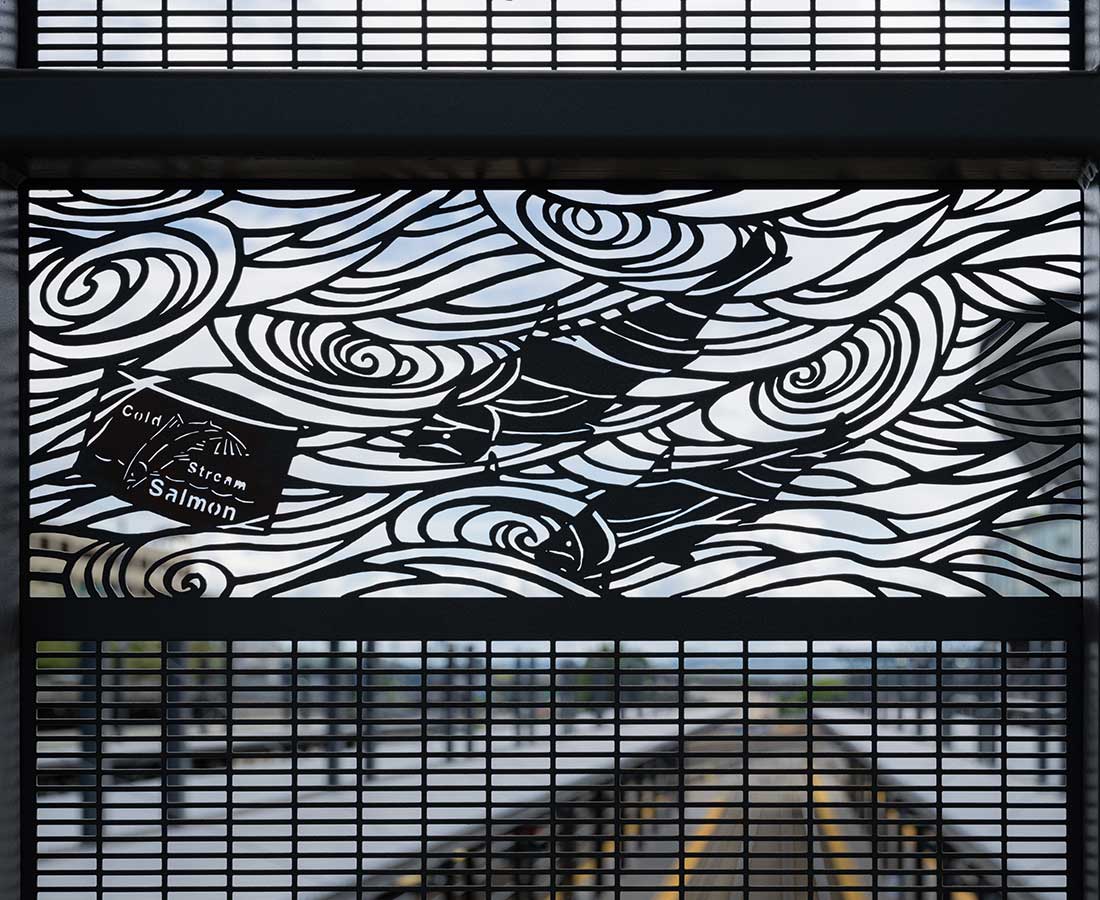Bridge Between Cultures
Nanda D’Agostino and Valerie Otani
Seattle
A pedestrian bridge celebrates the rich history and contemporary bustle of a longtime city hub.

The area around Seattle’s King Street Station has been a hub for trade, immigration, nightlife, and transportation for more than 100 years—since before the station itself was built in 1906. Flanked by the Chinatown-International District to the east and historic Pioneer Square to the west, the bustling area today serves local and regional buses, light rail, and commuter rail lines. The Weller Street Bridge allows pedestrians to cross over the light rail and Burlington Northern-Santa Fe Railroad tracks, connecting the two neighborhoods, along with a series of parking areas and two major stadiums. Nanda D’Agostino and Valerie Otani’s artwork Bridge Between Cultures reflects the enduring dynamism of the place.
Inspired by the area’s historical and ongoing cultural connections, the artists created 40 hand-cut paper pieces with images of trade, salmon, sports, music, trains, navigation, and immigration—and those images were then laser-cut into the steel latticework on the south side of the bridge. As light passes through the metal—day and night—it casts shadows like a set of theatrical gobos, transforming the bridge into a dreamlike lantern.
Continue Reading ›
The Weller Street Bridge was the first piece in a series of transportation improvements in the area. Numerous government and private partners worked together to realize the project, including 4Culture, King County’s Department of Metro Transit, the Federal Transit Administration, Washington State’s Department of Transportation, the City of Seattle, the Public Stadium Authority, Sound Transit, Arai/Jackson Architects and Planners, KPFF Consulting Engineers, and Mowat Construction Company. In the second half of 2024, the County officially transferred ownership of Bridge Between Cultures to Sound Transit.
Based in Portland, OR, D’Agostino is a multidisciplinary artist who works primarily in performance and sculptural installation, video, and public art, and her work has been exhibited around the world. Otani (1947–2020) also lived and worked in the Portland area, creating public installations and sculptures in addition to performing Taiko. The two artists began collaborating on site-specific projects in 1993 and went on to create many public works together.
